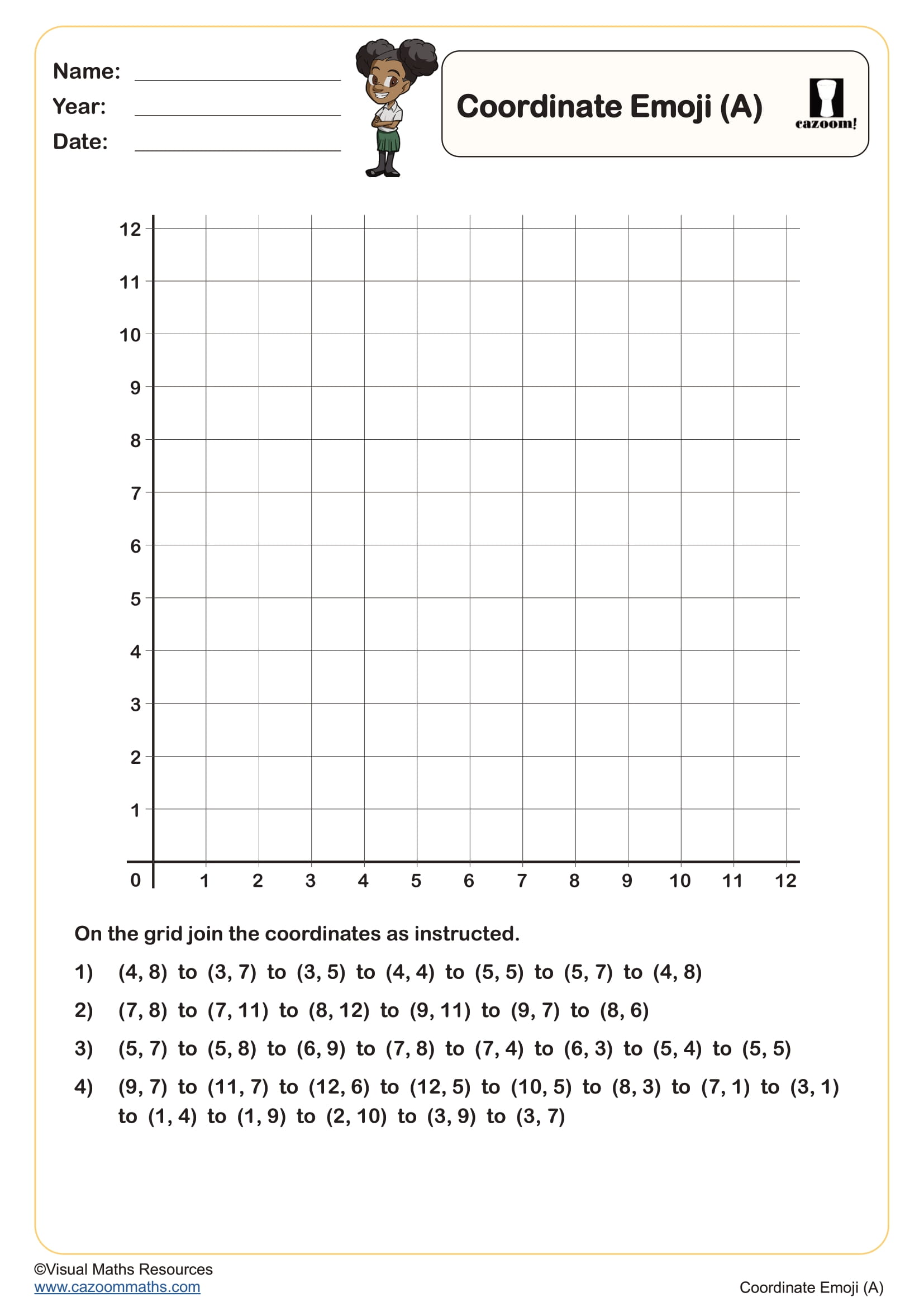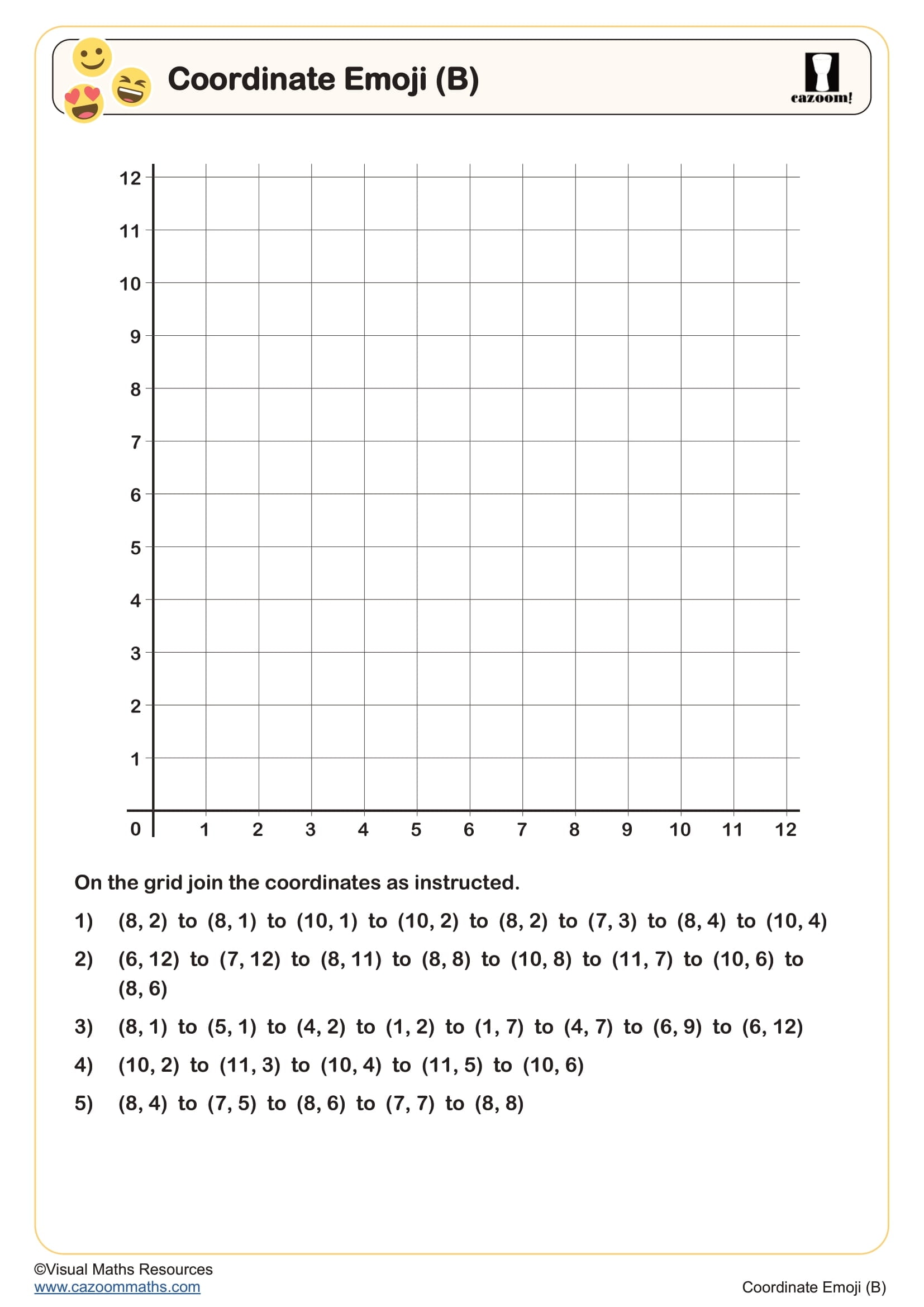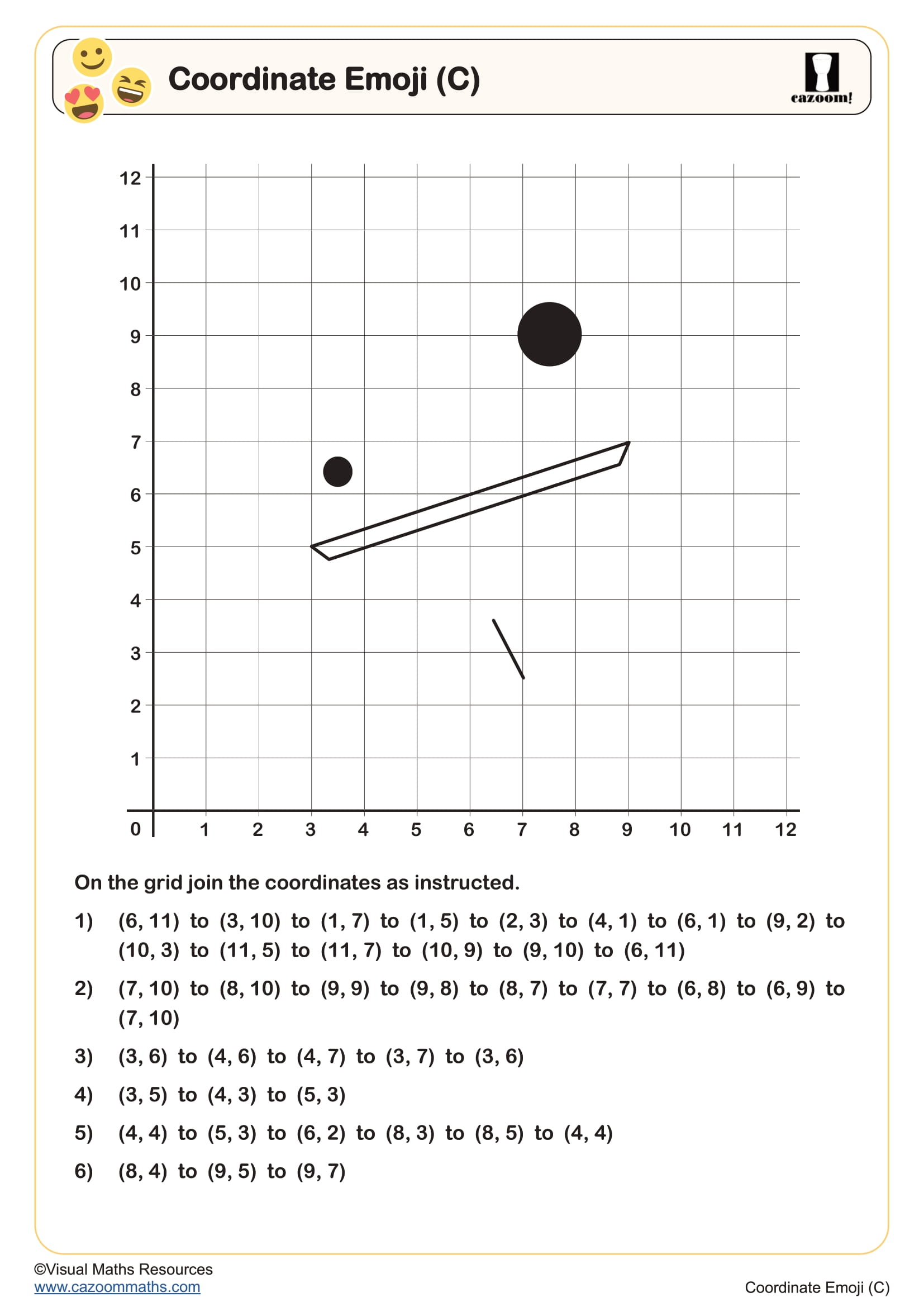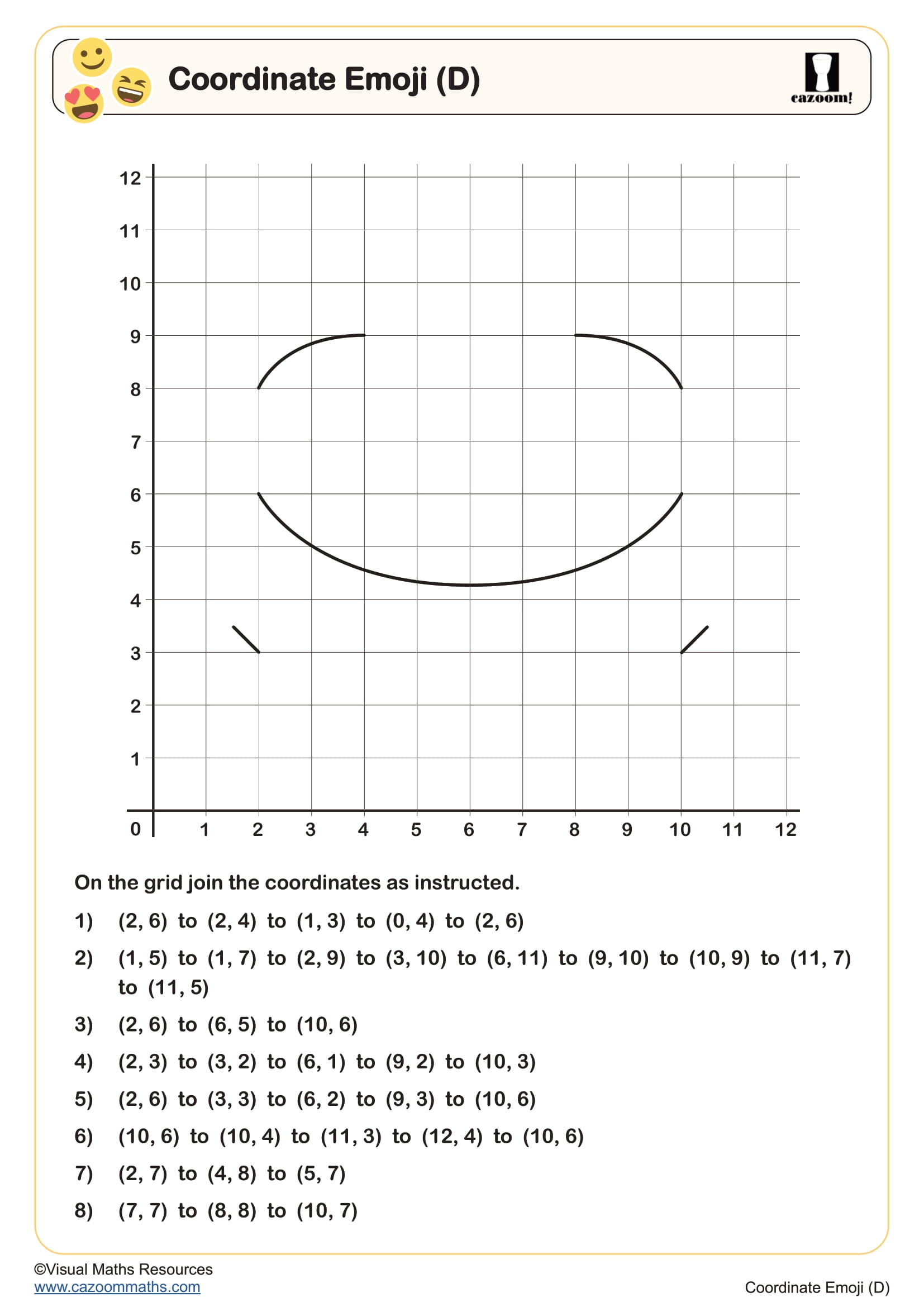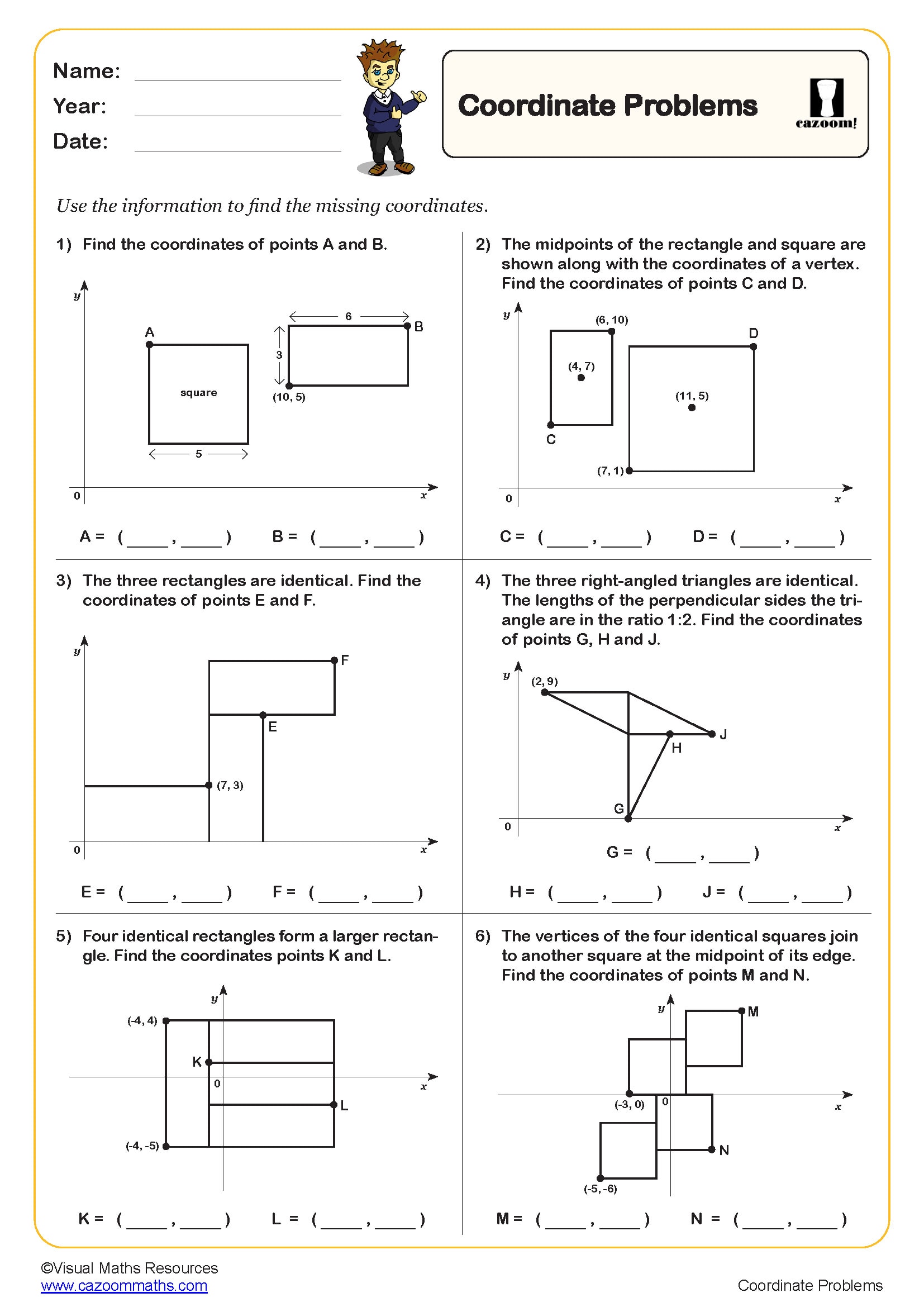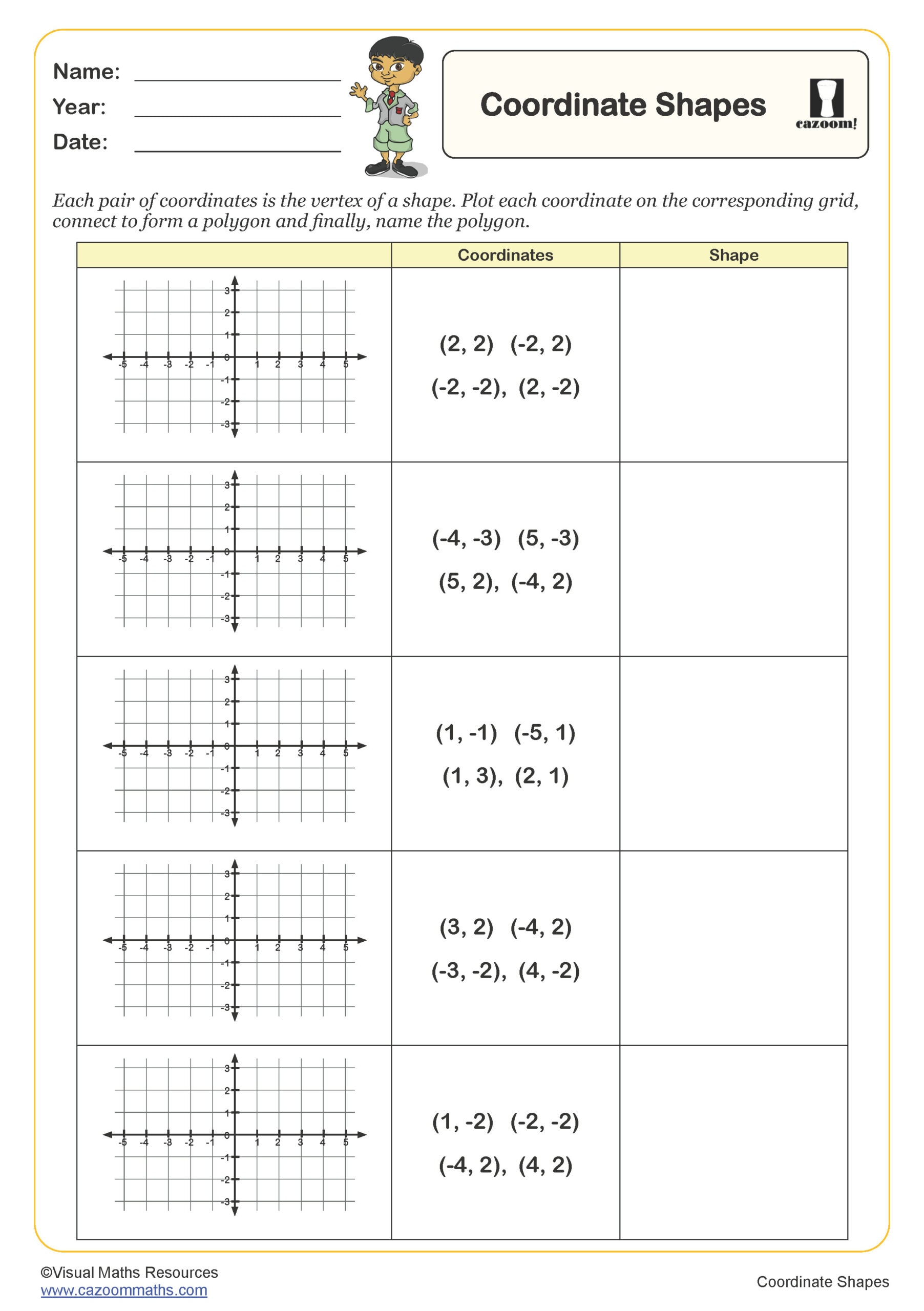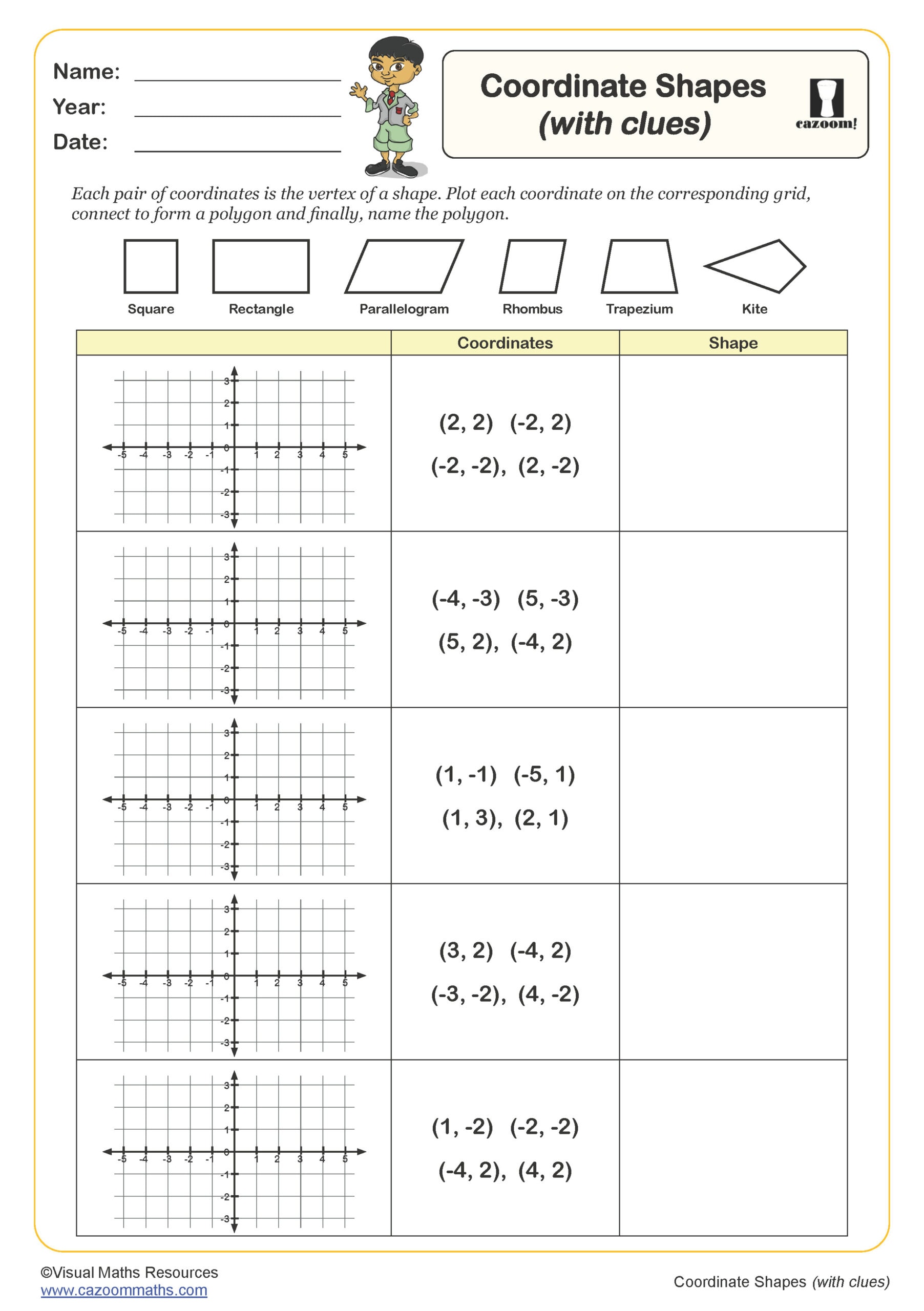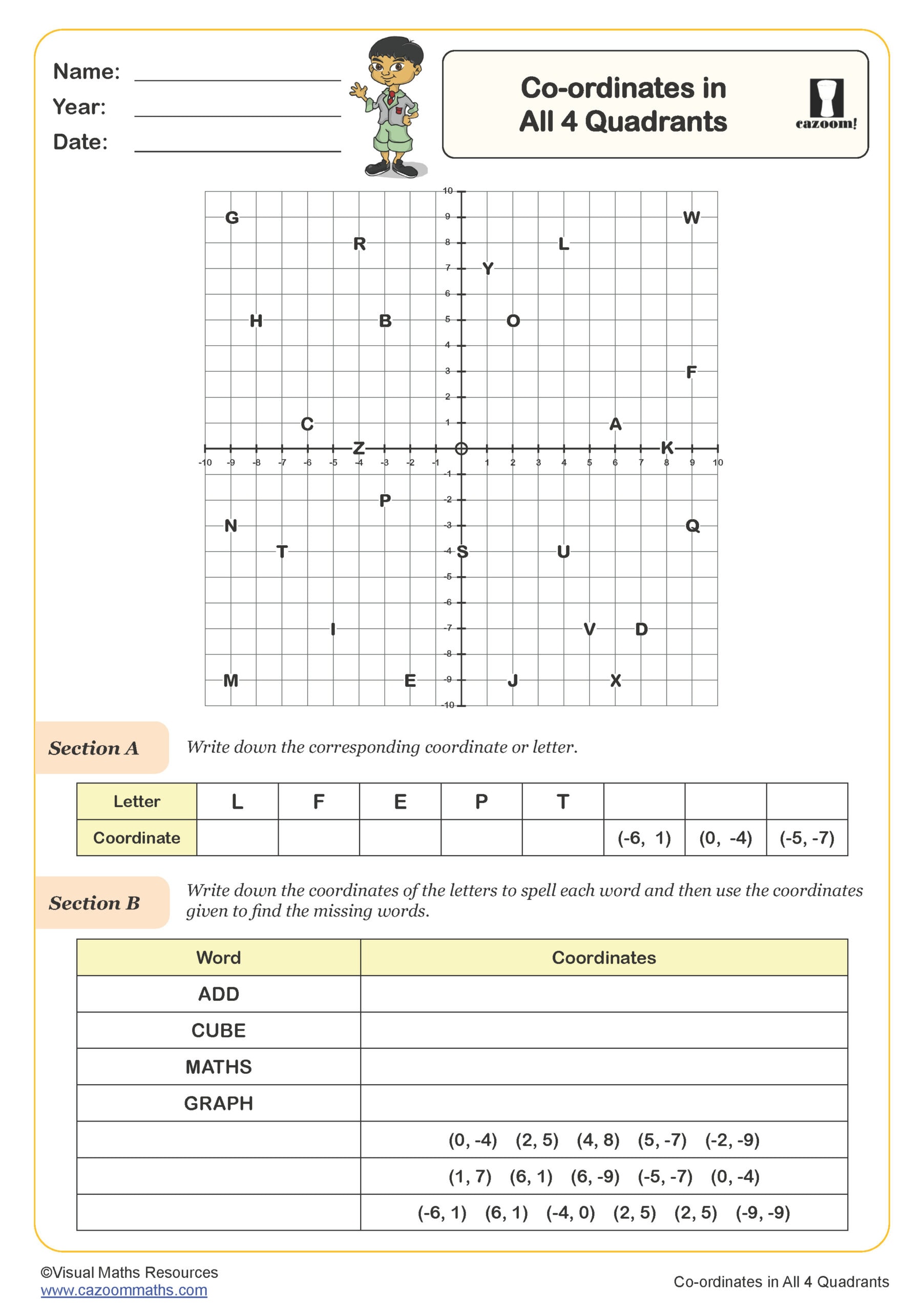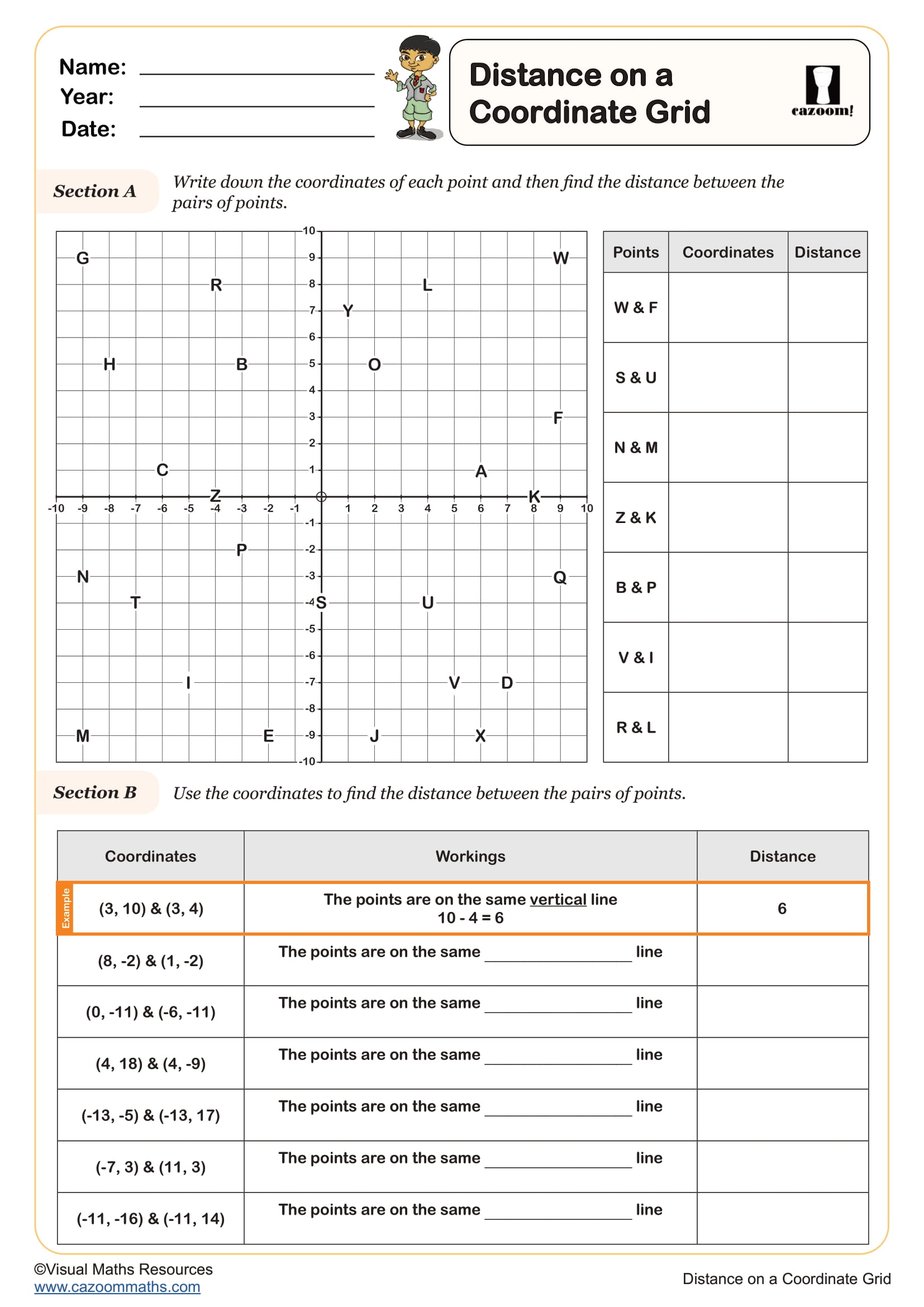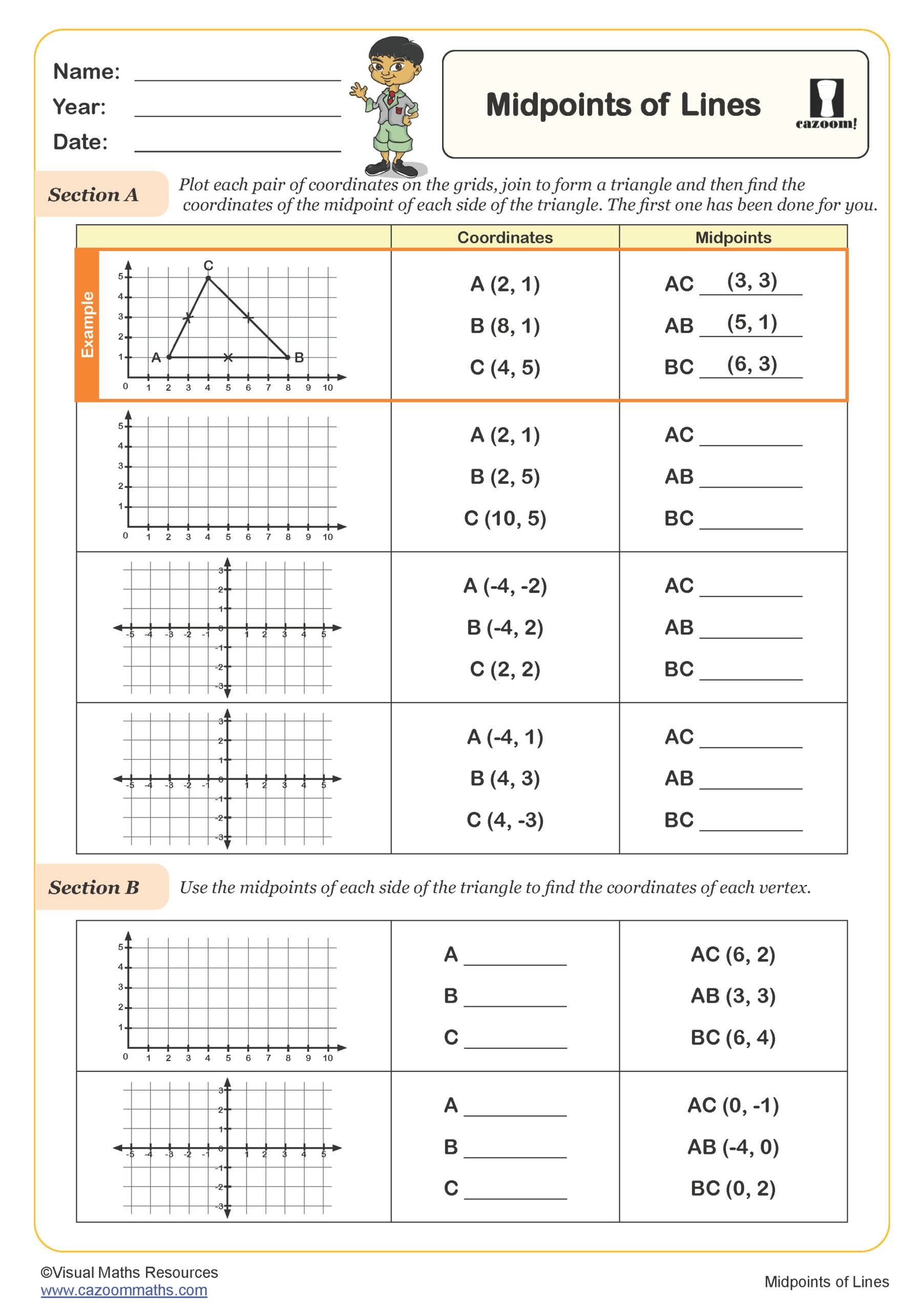Year 6 Position and Direction Worksheets
Essential Year 6 Geometry Practice Worksheets with Detailed Solutions
Our Cazoom Maths expert team has observed that advanced geometry skills can be overwhelming for your young students who are transitioning from KS1 to KS2. However, without mastering these basic geometry equations, your primary school students will face difficulties in KS3. To make this learning process smooth and convenient, we have created our worksheets in ready-to-use, printable PDF format. Each of these worksheets includes separate answer sheets to facilitate an easy checking process. Download our maths activities right now to provide the extra help your young learners need!
Which Coordinate Skills Do Year 6 Position and Direction Worksheets Cover?
Let’s be honest, without learning directional skills, your young pupils will not be able to master more advanced maths knowledge, such as algebra or trigonometry, right? That is exactly why the Cazoom Maths expert team has specifically created these worksheets.
Here are the KS2 geometry concepts that we have included in our resources-
• Coordinate Plotting Practice
• Shape & Geometry Applications
• Four Quadrants & Negative Numbers
• Mathematical Reasoning & Problem Solving
How Position and Direction Practice Boosts Year 6 Maths Confidence
Your primary school students must master basic coordinate skills to score better on GCSE geometry in secondary schools. Our PDF geometry activities provide the much-needed practice your young pupils need to understand the four quadrants, whilst building problem-solving skills that'll serve them well in secondary school.
• Builds confidence with negative numbers – essential for algebra success
• Develops spatial reasoning skills – crucial for advanced geometry
• Strengthens logical thinking – coordinates require step-by-step analysis
• Prepares for GCSE transformations – translation and reflection feature heavily
• Improves accuracy in plotting points – precision matters in mathematics
Surprising Places Year 6 Position and Direction Skills Show Up Daily
Geometry skills are a crucial stepping stone for developing basic mathematical skills. If we think correctly, we will realise that these mathematical concepts appear constantly in our daily lives.
• GPS and satellite navigation systems – plotting exact locations globally
• Computer game development – moving characters and objects on screen
• Architecture and engineering – designing buildings with precise measurements
• Geography lessons – understanding map references and grid systems
• Art and design – creating symmetrical patterns and transformations
• Data analysis – plotting graphs and interpreting coordinate data
